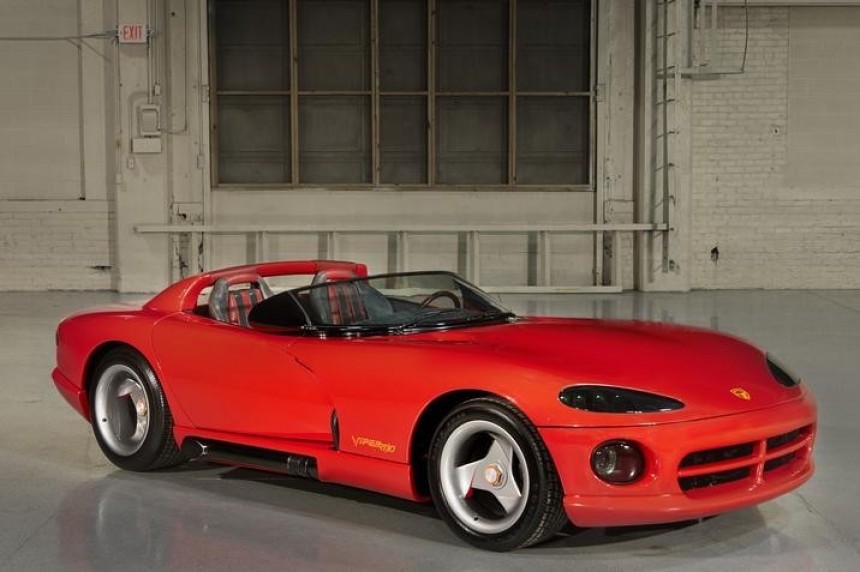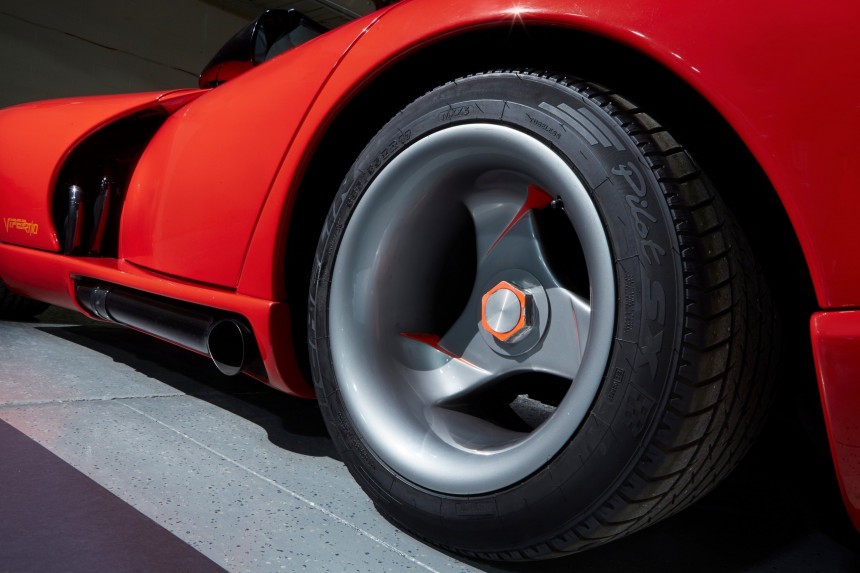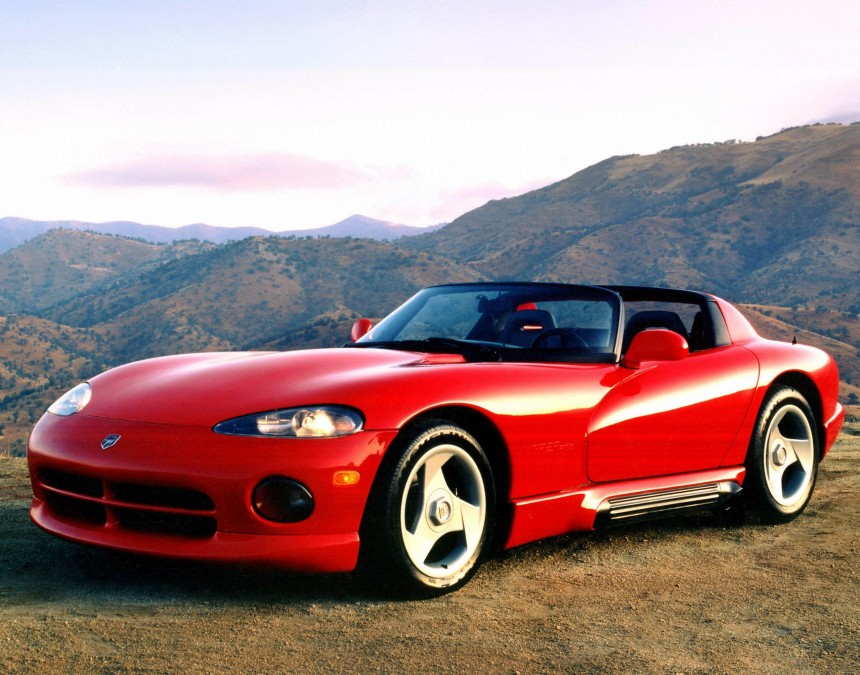Picture this: It’s the ‘80s, and you are Chrysler. You are getting absolutely dragged through the mud by rivals Ford and GM. In that situation, you need something groundbreaking, and you need it yesterday. So, if you are Chrysler, what are you supposed to do? Well, you build an insane speedfreak of a vehicle. That might sound like a bad idea, but let’s take a look at what possessed Dodge to build the Viper during that difficult time for the company.
Before getting to how the car actually came to be, we should take a look at why its very existence is so surprising and unexpected. In order to do so, put on some disco, grab your shiny shirts and let’s take a quick trip back to the ‘80s. Back then, the car industry, especially in the States, was filled with sad econoboxes that handled like they had springs made from wet cardboard and barely made any power.
That was so because of that pesky gas crisis, and those emissions regulations choked engines to a dismal point. And what do you do when you’re the United States and your biggest gift to the world is the all-mighty, gas-guzzling V8? Well, you should start panicking. That time period, from 1973 to 1983, is known as the Malaise era, and its boring, underpowered cancerous cars would spread long after.
People were driving boxy grandpa mobiles that were as dull to drive as my last class on the Friday before summer break, and Chrysler was no different. Lee Iaccoca, who was in charge of Chrysler, Dodge, and Plymouth, came up with the idea of building every car on the same platform, just different body styles, known as the K-Car. While this strategy achieved his goal of saving the company from bankruptcy and changed the way American cars were built, it didn’t meet the sales expectations, and he needed something better.
In that context, making a crazy sports car might sound like suicide, even more so when you take into account the already highly competitive sports car market filled with established, popular offerings like the Corvette from the U.S. and other brands like Ferrari. But Bob Lutz was oblivious to these signals, and he was determined to bring back American muscle and fury. So in 1988, he started work on one of the most unexpected cars ever made.
In order to do so, he needed a plan and, first and foremost, inspiration. The new Chrysler sports car would take inspiration from the Jaguar E-Type and the Shelby Cobra. Then, he had more requests - no electronic driver aids, a manual transmission, and a big honker of an engine. This task was handed off to someone by the name of Tom Gale. At first, he carved a model out of clay and showed it to Bob Lutz. Everyone was happy, and the green light was given to commence the project.
After creating the clay model, Tom assembled a team of 21 people and proceeded to work in secrecy on the project, with no limitations or pressure from the bigwigs. While this might sound like the dream scenario for any petrolhead who dreams of designing their own car, Team Viper also had an astonishingly low budget: 50 million dollars for the whole development. That might sound like a massive number, but to put it into perspective, during that same time, Lexus spent one billion dollars developing the LS400.
So, in order to save money, they had to cut a lot of corners and create a sort of parts bin special when it came to the new creation. Nicknamed ‘Felicity,’ the first mule was actually a Corvette widened to match the Viper’s proportions - and it was scrapped, as it was still not wide enough. Parts from the truck division were also snuck in, like suspension components and wheel hubs from the upcoming Dodge Dakota.
Dick Winkles, from Dodge’s performance division, even dusted off an old racing Hemi V8 from the ‘60s just to get the prototype moving. So, the prototype was kind of ready, but there was one more obstacle - getting the big boss, Lee Iaccoca, on board, and that was no easy feat. He was the king of cheap, boring cars made with volume sales in mind. But, while that was the story when he was chief executive of Chrysler, he was also the man who brought the Mustang into the world, so was that petrol heart still beating inside of him?
In order to find out, Lutz brought with him a secret weapon. He called up a man who Iaccoca knew very well, a man who redefined what building an American car meant - Carroll Shelby himself. The car was revealed at the 1989 International Auto Show. Lutz personally revealed the Viper, but it was nothing more than a sheet-metal mockup with an old V8. That said, it didn’t really matter, as the whole press and public were snapped out of that Malaise-era trance, and Iaccoca could deny it no more - America loved this new performance machine.
What's more, it even had the perfect name. Legend has it that, on a trip to Italy, Tom Gale was having dinner with the head of ItalDesign, who, at the time, was helping design the Eagle Premier for Chrysler. Talk of the project came up and the inspiration behind it being the Shelby Cobra. So Tom asked what an Italian name for a snake was: Vi-pe-ra - Viper. So, everything was laid out and promising for an outstanding car.
Following the 1989 Auto Show, the team working on the project was expanded to 85 people, and the first thing on the agenda was getting rid of that god-awful V8. This task fell on a man named Herb Helbig, an engineer for Chrysler’s big horsepower division. Tales of why the Viper got a V10 range from crazy stories to even crazier stories, but the truth is this - it was cheap. This supercar was powered by a truck motor, but it’s not that simple.
You see, I said at the beginning that Lee Iaccoca did a really smart thing to save Chrysler with the K-Car. But he made another smart move - he bought AMC and Lamborghini and shared resources between the companies. So Team Viper turned to the Italians to modify the iron beast of an engine and re-cast it in aluminum. They also refined the parts and sent the 8.0-liter (488 ci) power plant bag to the States. The push-rod, truck-derived behemoth produced 400 hp (406 ps) under that massive hood. Getrag was approached to design the gearbox, but they passed on the opportunity, so Borg Warner stepped in to design a manual transmission that was able to negotiate the power to the rear wheels.
Seeing the finished V10-powered prototype and going for a drive in it, Iaccoca gave the green light to start making the things, but make them fast. In 1991, only two years after the first clay model, Chrysler was asked to provide a pace car for the Indy 500. Their first choice was the Stealth, which was a rebranded Mitsubishi. So, why not show off something American? After a few words with the PR team, the Stealth was swapped with the now production ready Dodge Viper. The world got their first glimpse of the finished product at the Indy 500 race, with none other than Carroll Shelby at the wheel.
Team Viper had done it. They built a car in three years - and what a car. It was raw and unforgiving, a true spiritual successor to the Shelby Cobra, and it even got the blessing from Cobra’s father. In 1992, the venomous snakes were released to the public, and the first gen was just an engine with four wheels. The top was made from a cheap canvas, there were no door handles, and the only safety features were a seatbelt and how good of a driver you were.
And that’s what made the Viper such an unexpected car. It was the car America needed at the time. It blew the doors of the Corvette while costing less money, and it came from the company that, at the same time, was offering you a minivan. This was the car that might be your very last drive, and it came at a time and from a company that was building square cars with barely 100 hp. But that’s what made it so great. It reignited the American rebellious spirit. It was a car that didn’t care - loud, too powerful, and insanely unsafe. It was the car needed to rekindle America’s passion for power.
That was so because of that pesky gas crisis, and those emissions regulations choked engines to a dismal point. And what do you do when you’re the United States and your biggest gift to the world is the all-mighty, gas-guzzling V8? Well, you should start panicking. That time period, from 1973 to 1983, is known as the Malaise era, and its boring, underpowered cancerous cars would spread long after.
People were driving boxy grandpa mobiles that were as dull to drive as my last class on the Friday before summer break, and Chrysler was no different. Lee Iaccoca, who was in charge of Chrysler, Dodge, and Plymouth, came up with the idea of building every car on the same platform, just different body styles, known as the K-Car. While this strategy achieved his goal of saving the company from bankruptcy and changed the way American cars were built, it didn’t meet the sales expectations, and he needed something better.
In order to do so, he needed a plan and, first and foremost, inspiration. The new Chrysler sports car would take inspiration from the Jaguar E-Type and the Shelby Cobra. Then, he had more requests - no electronic driver aids, a manual transmission, and a big honker of an engine. This task was handed off to someone by the name of Tom Gale. At first, he carved a model out of clay and showed it to Bob Lutz. Everyone was happy, and the green light was given to commence the project.
After creating the clay model, Tom assembled a team of 21 people and proceeded to work in secrecy on the project, with no limitations or pressure from the bigwigs. While this might sound like the dream scenario for any petrolhead who dreams of designing their own car, Team Viper also had an astonishingly low budget: 50 million dollars for the whole development. That might sound like a massive number, but to put it into perspective, during that same time, Lexus spent one billion dollars developing the LS400.
So, in order to save money, they had to cut a lot of corners and create a sort of parts bin special when it came to the new creation. Nicknamed ‘Felicity,’ the first mule was actually a Corvette widened to match the Viper’s proportions - and it was scrapped, as it was still not wide enough. Parts from the truck division were also snuck in, like suspension components and wheel hubs from the upcoming Dodge Dakota.
Dick Winkles, from Dodge’s performance division, even dusted off an old racing Hemi V8 from the ‘60s just to get the prototype moving. So, the prototype was kind of ready, but there was one more obstacle - getting the big boss, Lee Iaccoca, on board, and that was no easy feat. He was the king of cheap, boring cars made with volume sales in mind. But, while that was the story when he was chief executive of Chrysler, he was also the man who brought the Mustang into the world, so was that petrol heart still beating inside of him?
What's more, it even had the perfect name. Legend has it that, on a trip to Italy, Tom Gale was having dinner with the head of ItalDesign, who, at the time, was helping design the Eagle Premier for Chrysler. Talk of the project came up and the inspiration behind it being the Shelby Cobra. So Tom asked what an Italian name for a snake was: Vi-pe-ra - Viper. So, everything was laid out and promising for an outstanding car.
Following the 1989 Auto Show, the team working on the project was expanded to 85 people, and the first thing on the agenda was getting rid of that god-awful V8. This task fell on a man named Herb Helbig, an engineer for Chrysler’s big horsepower division. Tales of why the Viper got a V10 range from crazy stories to even crazier stories, but the truth is this - it was cheap. This supercar was powered by a truck motor, but it’s not that simple.
You see, I said at the beginning that Lee Iaccoca did a really smart thing to save Chrysler with the K-Car. But he made another smart move - he bought AMC and Lamborghini and shared resources between the companies. So Team Viper turned to the Italians to modify the iron beast of an engine and re-cast it in aluminum. They also refined the parts and sent the 8.0-liter (488 ci) power plant bag to the States. The push-rod, truck-derived behemoth produced 400 hp (406 ps) under that massive hood. Getrag was approached to design the gearbox, but they passed on the opportunity, so Borg Warner stepped in to design a manual transmission that was able to negotiate the power to the rear wheels.
Team Viper had done it. They built a car in three years - and what a car. It was raw and unforgiving, a true spiritual successor to the Shelby Cobra, and it even got the blessing from Cobra’s father. In 1992, the venomous snakes were released to the public, and the first gen was just an engine with four wheels. The top was made from a cheap canvas, there were no door handles, and the only safety features were a seatbelt and how good of a driver you were.
And that’s what made the Viper such an unexpected car. It was the car America needed at the time. It blew the doors of the Corvette while costing less money, and it came from the company that, at the same time, was offering you a minivan. This was the car that might be your very last drive, and it came at a time and from a company that was building square cars with barely 100 hp. But that’s what made it so great. It reignited the American rebellious spirit. It was a car that didn’t care - loud, too powerful, and insanely unsafe. It was the car needed to rekindle America’s passion for power.




